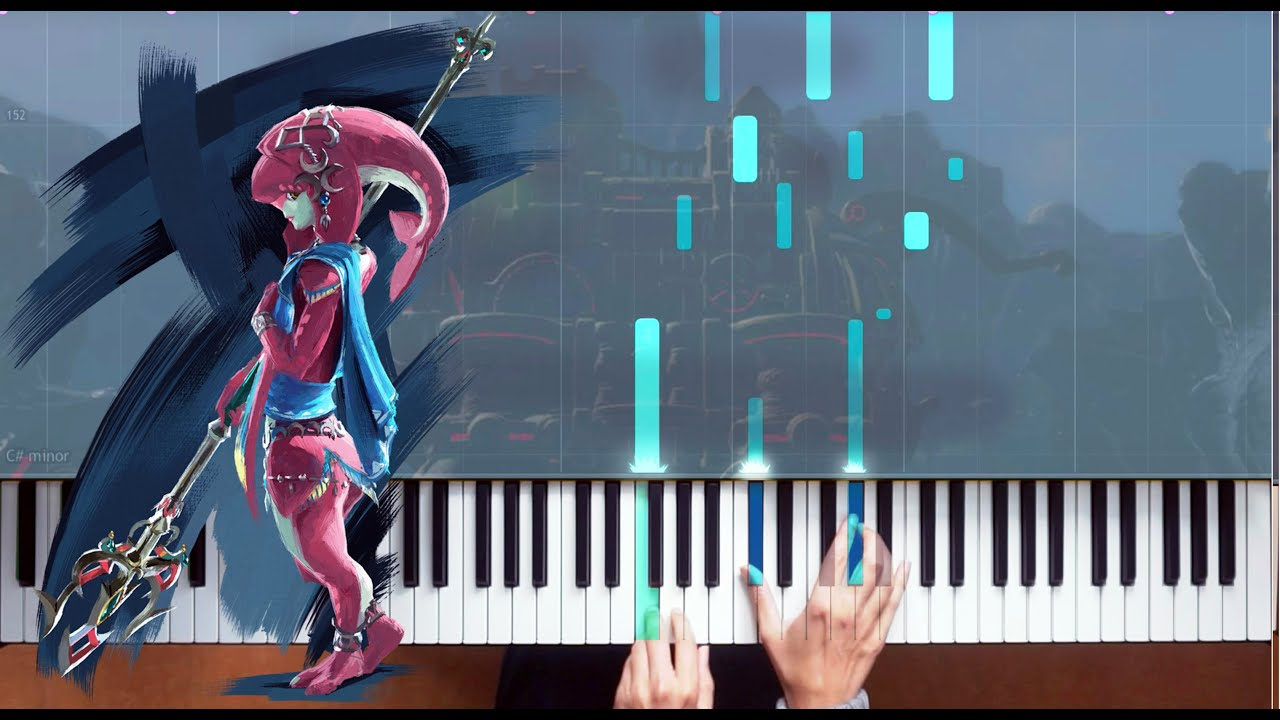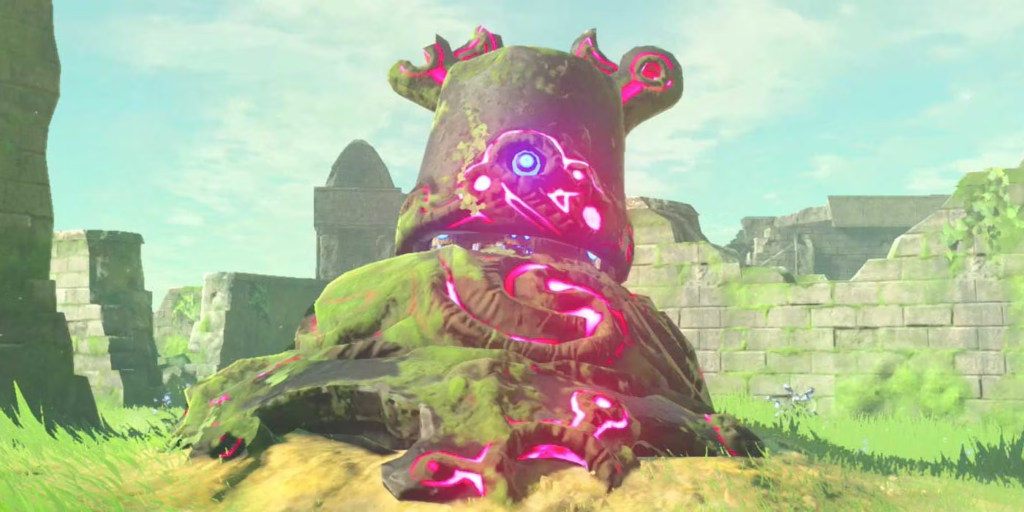10 Best Songs in Breath of the Wild
*Guardian theme intensifies*

If there’s one thing that makes each Zelda game unique, it’s the music. No one can forget the jolly tune of Outset Island from Wind Waker, nor can they lose sight of Majora’s Mask‘s creepy, dark deviation. And Breath of the Wild has it all. From pumped-up, whimsical orchestral tracks that accompany boss battles to the piano taps you’ll hear while roaming the overworld, here are BOTW’s 10 best songs ranked least to most memorable (excluding songs “reused” from other Zelda games, like Zora’s Domain and Goron City).
10. Divine Beast Vah Medoh (Inside)

The Divine Beast Vah Medoh interior theme is a pure work of art. Unlike Vah Ruta and Vah Naboris, whose interior themes are barely noticeable, Vah Medoh has a distinct piano tune that is completely heart-wrenching through it all. It really echoes the pain of the Rito Champion Revali’s unexpected death. Throughout the first part of the song, you’ll hear a high note-low note repetitive pattern that tells the story of Revali’s height (success) and fall (death). The rest of it has a crescendo of piano notes that finishes in a faster-paced closure that probably means Revali died quickly to Windblight at the end of their battle.
9. Parasailing Minigame

The Parasailing Minigame is found at Eventide Island after the completion of the Korgu Chideh Shrine, right after you’ve made your way through being naked on a deserted island with a huge cyclops in front of you. And the little fly-through-rings minigame may not have the best reputation, but its jolly theme certainly does. It adds a happy-go-lucky full song to the repetitive notes that make up the other minigames’ themes, cementing it in the position of the only minigame that has a different song. Unfortunately, you probably won’t be revisiting Eventide again after the challenge is over, with all the nightmares it probably already gave you, which honestly doesn’t give the track enough appreciation at all.
8. Rito Village

Rito Village’s theme goes along with the irresistible enchantment that the rustic town carries effortlessly. Packed inside of it is a nice nod to Wind Waker, as part of it is sampled from Dragon Roost Island’s theme way back, while the rest of it is an usher into the Ritos’ new lifestyle. The ascending notes after the song’s sections could be a symbol of the stairs and landings players must climb up in Rito Village. All this is done without forgetting the musical core of BOTW’s Rito: the jingle that is central to Revali’s Theme, Attack on Vah Medoh, and basically everything else related to Rito. Yes, that even includes Tarrey Town’s upgraded theme after recruiting Fyson.
7. Stables

When you first visit a stable, Ocarina of Time players will immediately get a good dose of nostalgic rush. The one main place where horses abound interpolates the beloved Epona’s theme, signifying Link’s trusty steed’s spirit still maintains a powerful presence in this new Hyrule. Fortunately, Epona is far from gone: you can scan the Super Smash Bros Link amiibo to return her back to her rightful owner. The stable theme is a tribute to the good old Zelda while still feeling like a song of its own.
6. Shrines

Considering that there are 120 shrines in Hyrule and you may be stuck on one for quite a long time, the shrine theme will always stick with you. It has become a classic Zelda tune that is the perfect techy-mix-piano track for solving every shrine’s challenges and rolling things frustratingly into holes with motion controls. Is it memorable? I would of course say yes. If and when you pass Breath of the Wild on to your kids, the shrine theme will go along with it. It’s impossible for it not to.
5. Mipha’s Theme

Mipha may be one of the most underrated Champions, but her theme certainly doesn’t deserve that same treatment. It uses the two music notes that make up the Zora Princess’s name (mi, fa) as the recurring central notes. Its main part is also sweetly similar to her little brother Sidon’s theme, just slower and gentler like Mipha herself. Her theme is a true masterpiece that embodies all of Mipha’s love and, in fact, the essence of who she is as a person.
4. Lost Woods

You can’t forget the Lost Woods. It’s that big, creepy forest that will kick you out if you take one wrong turn, but it serves its rightful purpose as the guardian of the adorable Korok Forest. Its new theme in BOTW takes a much-needed step away from Ocarina of Time‘s happy version: it has the perfect piano repetition to make the entire journey through the woods feel extra tense and eerie. And occasionally, you’ll even hear signature Korok sounds – a perfect prelude to the overdose of sounds in the Korok Forest you’re about to reach.
3. Guardian Battle

The Guardian battle song is unforgettable. In the heat of the moment, the intense track ramps up in a fast-paced piano composition as a futuristic rogue robot focuses a deadly laser at you. It ensures it’s the first thing you think of when you hear a whirring of a Guardian’s gears, or see its glaring blue eye beckoning you into combat in the middle of the night. Whatever it is, the Guardian battle theme will always be humming away in your head when the fearsome foes cross your mind.
2. Field (Day)

All players have known the Field (Day) song fondly from the very beginning of the game. It isn’t a heavy orchestral piece like past Zelda games’ overworld themes, but rather embraces the minimalistic side of Zelda music. It captures the essence of freedom in exploring Hyrule at your will with welcoming piano taps that accompany your travels. You won’t be overwhelmed with high-pitched flutes or heavy Goron drums as you traverse the land; for once, you can focus on what you’re doing and at the same time enjoy the peace of the music.
1. Hyrule Castle

If there’s one orchestral track that surpasses them all, it’s Hyrule Castle’s theme. Both the interior and exterior themes have a royal grandeur about them that suits Hyrule Castle perfectly. The exterior sounds majestic and official, telling you, “Here I am, the final dungeon of Breath of the Wild!” loud and clear, capturing the royalty that the castle bears in tragic ruins, while the interior is more stripped-down but still agonizingly royal. The interior theme also incorporates a small portion of the world-famous Zelda’s Lullaby, indicating Zelda’s struggles to fill her role as Hyrule’s last hope as Ganon looms over the castle. The theme perfectly illustrates the suffering that Hyrule and its princess have gone through for the last 100 years.


